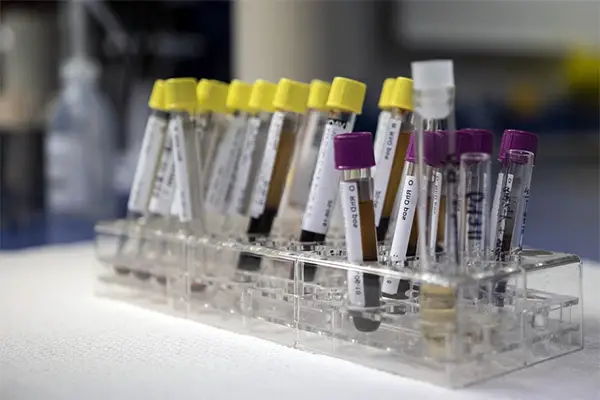Nowadays, blood clots have become very popular. This is due to the FDA and CDC’s decision to stop the administration of the Johnson & Johnson vaccine because there is a severe risk, although rare, of blood clot formation.
Vaccines are not the only cause of blood clots. Research says that blood type can have an impact on blood clot formation.
Blood type B most prone to blood clots
Scientists have been trying to understand the connection between blood clotting and blood type for a very long time. In a recent study published in 2020, January, in Arteriosclerosis, Thrombosis, and Vascular Biology, an American Heart Association journal, more than 400,000 people were examined. The results of the study showed that people who have blood type B were most prone to thrombosis or blood clot formation.

More precisely, in comparison with people with O blood type, the B blood type people had 45% more chances to suffer from thrombosis, and 55% more chances to suffer a deep venous thrombosis. The latter is a blood clotting type that develops in people’s deep veins.
O blood type people have the least chance of blood clots formation
Another more vulnerable blood type is A. In comparison to the O blood type, participants in the study with A blood type were 44% more likely to experience thrombosis, and 50% greater risk of deep venous thrombosis. As a matter of fact, any blood type when compared to the O blood type had a much higher risk of developing blood clots. More precisely, 44% higher chances of developing thrombosis, and 51% higher chances of deep venous thrombosis. Also, they had a 47% higher chance of developing a condition named embolism (a blood clot going to the lungs).
The study said: “Our findings are consistent with previous smaller observational reports indicating an increased risk of thromboembolic events in non-O blood group individuals compared to O blood group individuals. We found that blood groups A and B had similarly increased risks of developing thromboembolic events when compared to blood group O.”
Protein difference between blood clots
To explain the connection between blood clots and blood types, researchers say that protein differences may play a role. In fact, the von Willebrand factor, or VWF is found in lower amounts in people with O blood type. VWF is a protein that assists in blood clot formation.
However, this is just one of the many explanations. In the conclusion of the study, the researchers say: “Because thrombosis is a well-balanced and complex process that is affected by a variety of factors.”
Furthermore, the researchers continue: “There could be different biological mechanisms (ie, cell functionality, number of cell receptors) involved in the increased risk of thromboembolic events in blood group A and blood group B individuals, in addition to the already established relationship with VWF.”
Check with your doctor if you notice blood clot symptoms
It is very important to know what symptoms the blood clots cause. According to the CDC, over 100,000 humans pass away every year because of blood clots. The CDC advises people to know the symptoms of pulmonary embolism and deep vein thrombosis as the two most common types of blood clotting.
Symptoms indicated in deep vein thrombosis are tenderness, swelling, redness, and pain of the skin in the legs, stomach, or arms.
Symptoms that can tell if a person is experiencing a pulmonary embolism are chest pain, breathing difficulties, irregular or increased heartbeat, coughing up blood, low blood pressure, fainting, lightheadedness, or discomfort that can worsen with coughing or taking a deep breath.
The CDC advises people to immediately consult their doctors if they notice any of the symptoms mentioned above.
Source: American Heart Association News
